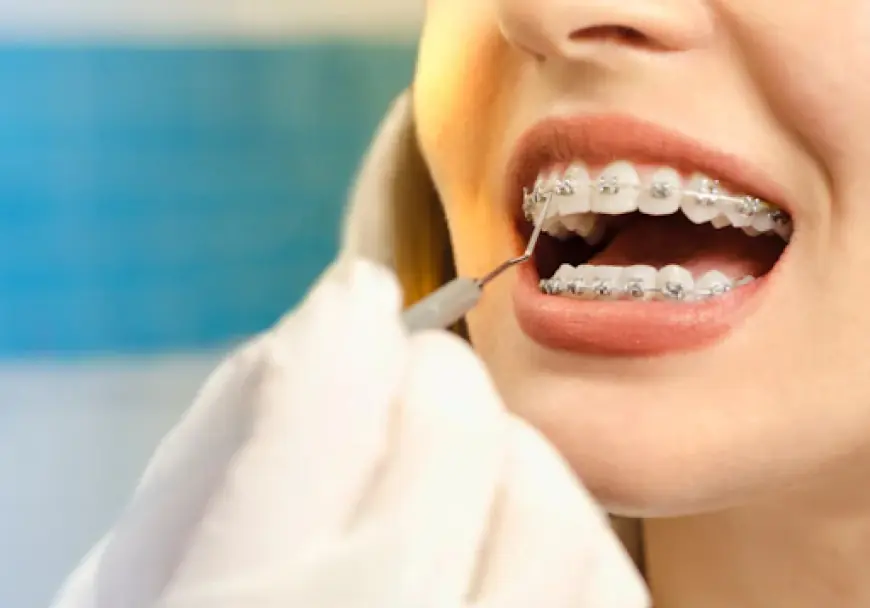The Hidden Benefits of Early Orthodontic Treatment

When it comes to orthodontic care, many people wait until they reach adulthood to seek treatment. However, early orthodontic treatment, which typically begins around the age of 7 or 8, can offer significant advantages for your child's long-term oral health. Orthodontists in Dubai are increasingly recommending early intervention to ensure that children have the best possible foundation for a healthy smile. In this article, we’ll explore the hidden benefits of early orthodontic treatment and why it's crucial to consider starting treatment earlier rather than later.
1. Prevention of Severe Dental Issues:
1.1 Addressing Alignment Problems Early:
- Correcting Bite Issues: Early treatment can help address bite problems such as overbites, underbites, or crossbites before they become severe. By addressing these issues early on, orthodontists can help prevent more complex treatments later in life.
- Improved Teeth Alignment: Early intervention helps prevent overcrowding or misalignment of teeth, allowing permanent teeth to come in properly. This reduces the risk of requiring more extensive treatment as the child gets older.
1.2 Avoiding Jaw Development Problems:
- Jaw Growth Guidance: Orthodontists can monitor the growth of the jaw and intervene when necessary to guide proper development. If left untreated, certain jaw discrepancies can cause long-term issues such as difficulty chewing or speaking.
- Correcting Skeletal Discrepancies: In some cases, early treatment can help guide the jaw into a more favorable position, avoiding the need for more invasive treatments later on.
2. Improved Long-Term Results:
2.1 Less Intensive Future Treatment:
- Shorter Treatment Time Later: When early orthodontic treatment addresses underlying issues, the need for more extensive work down the road is often reduced. This can result in shorter treatment times and less discomfort for the patient.
- Better Final Outcome: Starting treatment early increases the chances of a more effective and efficient outcome in the long run, as the teeth and jaws are still growing and more easily adjusted.
2.2 Reduced Risk of Tooth Extraction:
- More Space for Teeth: Early treatment can create additional space for permanent teeth, reducing the likelihood of needing to extract teeth in the future. This makes the overall orthodontic process smoother and more predictable.
- Minimizing Tooth Movement: By creating space and guiding teeth into the correct position at an early stage, orthodontists can reduce the need for more significant tooth movements as the patient matures.
3. Enhanced Self-Esteem for Children:
3.1 Boosting Confidence:
- Better Smile Development: Children who receive early treatment for alignment issues often experience a boost in self-esteem as their smiles improve. This confidence can carry over into social interactions and academic settings, benefiting the child in various aspects of life.
- Emotional Benefits: Fixing dental issues at an early age can alleviate the emotional challenges that come with self-consciousness about crooked or misaligned teeth.
3.2 Reduced Risk of Bullying:
- Preventing Negative Attention: Children with noticeable dental issues may be more susceptible to bullying or teasing from their peers. Early treatment can help correct these issues before they become a target for unwanted attention, helping protect the child’s mental health and well-being.
4. Simplifying Future Treatment Needs:
4.1 Guiding the Growth of Permanent Teeth:
- Monitoring the Eruption of Adult Teeth: Early treatment allows orthodontists to monitor the eruption of permanent teeth. By identifying issues early, they can provide timely solutions that prevent complications in the future.
- Reducing Future Issues: Treating alignment issues when permanent teeth are emerging ensures that these teeth grow in a healthier, more aligned position. This can make future orthodontic procedures, such as braces, more effective and efficient.
4.2 Improving Space Management:
- Creating Room for Eruption: Early treatment can help manage available space for teeth. By creating the necessary space for adult teeth to emerge, children can avoid overcrowding or misalignment, ensuring that all teeth come in properly.
- Enhancing the Bite: Proper bite alignment is crucial for effective chewing and overall oral health. By addressing issues early, orthodontists can help improve the child’s bite, preventing jaw discomfort or issues with tooth wear.
5. Fostering Good Oral Habits:
5.1 Establishing Good Dental Care Routines:
- Monitoring Oral Hygiene: Early orthodontic visits give orthodontists the opportunity to educate children on the importance of oral hygiene and how to care for their braces, aligners, or other appliances.
- Preventing Future Complications: By establishing healthy habits at a young age, children can avoid issues such as tooth decay, gum disease, and plaque buildup, which could negatively impact orthodontic treatment.
5.2 Early Detection of Other Dental Problems:
- Identifying Early Signs of Issues: During the early stages of orthodontic treatment, orthodontists can identify other dental problems such as tooth decay, cavities, or abnormal jaw development. Addressing these issues early can prevent more serious complications down the road.
- Comprehensive Care: Early visits also provide a chance to assess the overall health of a child’s mouth and ensure that other underlying issues are caught before they become more difficult to treat.
6. Choosing the Right Timing for Early Treatment:
6.1 When Should Treatment Begin?
- Ideal Age for Intervention: While every child is unique, orthodontists typically recommend evaluating a child’s oral development by the age of 7. At this stage, orthodontists can identify potential issues and determine the most appropriate timing for early intervention.
- Assessing Growth Patterns: The right timing for treatment depends on the child’s growth patterns and specific dental needs. Early evaluation allows orthodontists to tailor the treatment plan to each individual case.
6.2 A Personalized Treatment Plan:
- Customizing the Approach: Early orthodontic treatment is personalized to meet the needs of the child. Your orthodontist will create a plan that’s designed to address the specific dental and skeletal issues that may impact the child’s smile and bite.
- Flexible Treatment Options: Depending on the issues identified, treatment may include appliances like space maintainers, partial braces, or even early Invisalign treatments for younger patients.
7. Conclusion:
The hidden benefits of early orthodontic treatment are clear. By addressing dental issues early, children can enjoy a healthier, more aligned smile with fewer complications down the road. With the help of experienced orthodontists in Dubai, parents can ensure that their children receive the best possible care at the right time. Early intervention not only improves oral health but also boosts confidence, prevents future complications, and ensures the smooth development of permanent teeth. If you’re considering orthodontic treatment for your child, it’s important to consult an orthodontist as early as possible to start the process toward a lifetime of healthy, beautiful smiles.
What's Your Reaction?
 Like
0
Like
0
 Dislike
0
Dislike
0
 Love
0
Love
0
 Funny
0
Funny
0
 Angry
0
Angry
0
 Sad
0
Sad
0
 Wow
0
Wow
0
























































